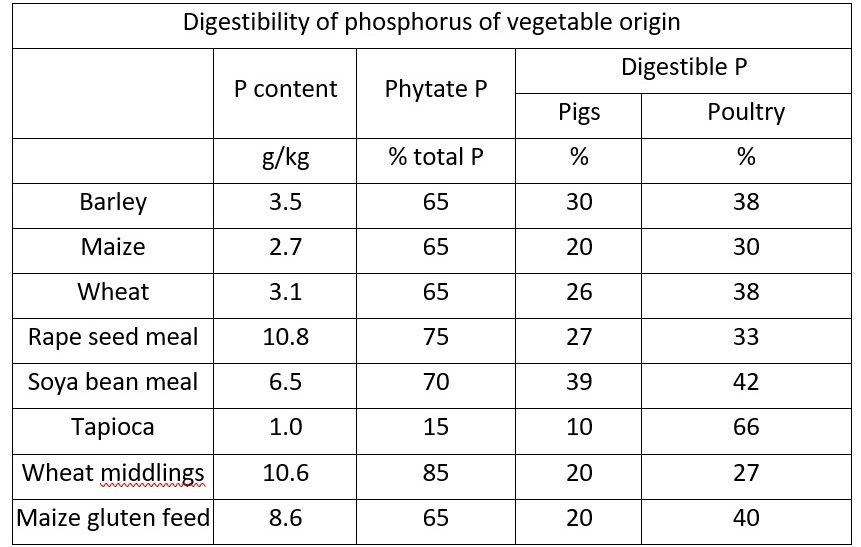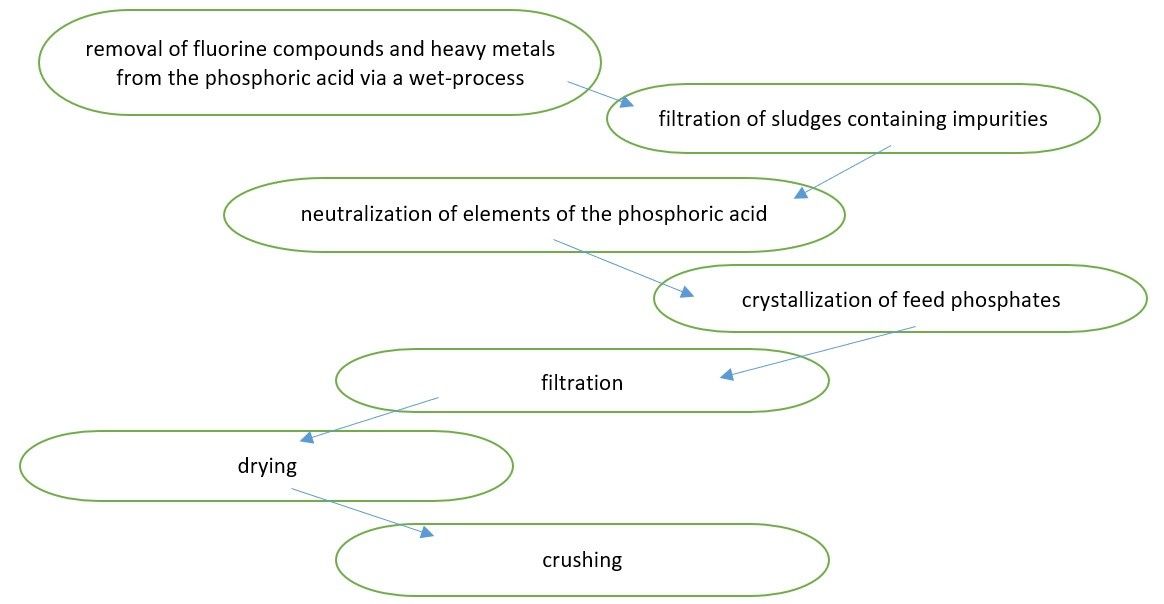Sometimes the old ways are the best ways; Reading a book is better than reading an e-book, and receiving a letter is better than receiving an email.
The same can be said for animal feed additives.
Modern, 21st century feed production has countless options for adding nutrients; polypeptides with phytase activity, inorganic copper chelates, or polynucleotide sequences, to name a few. But the feed producer’s weaponry still holds a place for older, low-tech nutrition: phosphate feed additives.
Today, dicalcium and monocalcium phosphate are still popular choices for feed supplementation, just as they were when they were first developed over sixty years ago.
But with animal nutrition science so far advanced, why does such a simple feed additive remain in such high demand?
Why are Phosphate Feed Additives Needed?
Vegetable feeds typically contain only 30% of the phosphorus that livestock and poultry need. Even then, only half of this amount is absorbed. Yet, phosphorus is a vital ingredient for life.
As the industry trade body, the IFP, explains, “The high chemical reactivity of phosphorus means that it only occurs in nature combined with oxygen or other elements in the form of phosphates. Main phosphate sources are of plant, animal and inorganic origin, containing varying quantities of phosphorus in several different chemical forms.”
As most of these forms are not easily absorbed, a phosphorus feed additive is often required.

A lack of phosphorus can result in poor health including:
· restricted growth
· deterioration of appetite
· disruption of the bone mineralization process
· decreased productivity, followed by reduced consumption and digestion of feed; digestive disorders, moulting, and feather/hair loss
· a slowdown or complete cessation of growth
The use of phosphate feed additives can help prevent all of these conditions, as well as aiding bone growth.
How are Phosphate Feed Additives Made?
The most popular form of feed grade phosphate is dicalcium phosphate (DCP), but its production is not simple. As the industry journal All About Feed, explains, “The rock phosphate is first digested with sulphuric acid, yielding phosphoric acid. After further filtration, purification and defluorination steps, this ‘feed grade’ phosphoric acid is reacted with a calcium source such as quicklime and/or limestone under strictly controlled conditions. Thus, anhydrous dicalcium phosphate (CaHPO4) is formed.”
However, DCP is not the most effective form of feed grade phosphate. Increasingly livestock and poultry farmers are using monocalcium phosphate (MCP) due to its higher phosphorus content.
The MCP production process takes DCP to the next level. By reacting the DCP with purified feed grade phosphoric acid MDCP (a complex of mono- and dicalcium phosphate) the products phosphorous content is further improved, decreasing its Ca:P ratio.
This final feed additive is MCP.

But why take this extra step?
What’s the Difference Between DCP and MCP?
The extra effort taken to produce MCP makes for a better final product.
MCP is highly soluble, allowing for increased flexibility in diet formulation. It is also more easily digested by farm animals, meaning that less of the feed additive is wasted and it has less impact on the environment from run off.
Anhydrous DCP has a particularly low level of phosphorus digestibility. This is in contrast to the high intake from MCP derived from DCP via the HCI production process. This method produces a feed additive of good purity and optimal phosphorus concentration.
Research comparing the various inorganic forms of phosphate feed additives was recently published in the Spanish Journal of Agricultural Research (pdf). Among other findings, this study found that in chicken diets up to the age of day 21, “ … growth response was lower when anhydrous DCP was included in the diet as compared to MCP … [there was] higher P availability in purified grade MCP diets than in DCP diets … [and that] P in the anhydrous DCP form is less available for poultry than the hydrated salt [mono-sodium phosphate].”
Previous research had already noted that, “… the highest digestibility of phosphates was recorded when combined with a 2% citric acid solution. The best results were produced by feed phosphates that do not contain fluorine, as they saturated the body with both phosphorus and calcium.” Adding that there is, “… a distinct advantage in using Monocalcium phosphate made from DCP enriched with defluorinated feed-grade phosphoric acid over other sources of phosphorus.”

Additionally, MCP has the following advantages over other inorganic sources of phosphorus:
· It neutralizes the harmful effects of a number of elements - sodium, potassium, magnesium, (among others).
· It aids digestion, by increasing the activity of digestive enzymes.
· It strengthens the immune system.
· It participates in the relocation of lipids, protein biosynthesis, and the cleansing of the intestine from harmful substances.
· It improves the efficiency of carbohydrate, protein, fat, mineral, and energy metabolism in the body.
· It does not contain any heavy metal impurities.
· It has no negative effect on enzymes, amino acids, proteins and vitamins.
The animal feed industry is a competitive, highly technical, and heavily regulated place. s and farm researchers are consistently making breakthroughs in both feed additive products and farming techniques. In doing so, they make great progress in improving agricultural productivity, but they can also 'muddy the waters' of what livestock and poultry farming is.
The fact is, sometimes the older simpler inputs are still the best. Having read the why, how, and what of feed grade monocalcium phosphate, maybe the only question remaining for farmers and feed producers is; when?
AG CHEMI GROUP has been supplying animal feed additives since 1994. It is also a global supplier of industrial quantities of monocalcium phosphate.
MEET OUR TEAM

If you are interested in mcp prices and supplies, or need animal feed raw materials, then please contact the friendly, multi-lingual sales team, or take a look at the AG CHEMI GROUP catalogue.
Photo credit: All About Feed, Feedvalid, ExportersIndia, Wateronline, AGCHEMIGROUP, & Roullier, Pexels